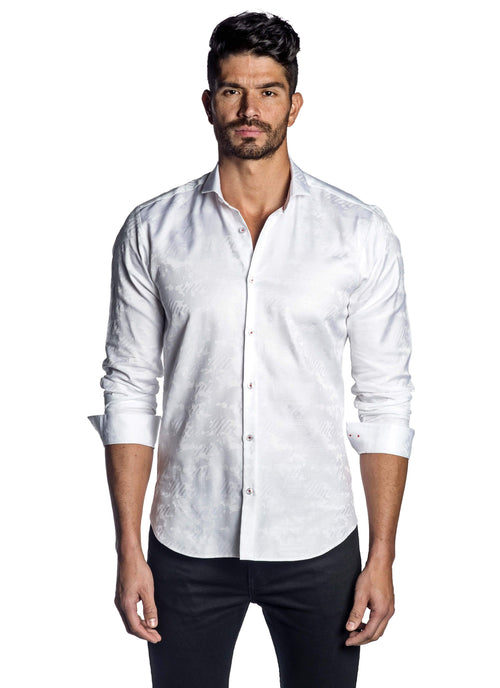Suit Buying Rule #1 Buy A Suit Online Or Offline?
Your initial step is to settle on a choice: will you purchase your suit on the web or disconnected? Which is better? That relies upon what YOU esteem.
Purchasing a suit on the web
Assuming you are phoenix medical malpractice attorney and you need choices, the best choice is continuously going to be on the web.
For accommodation, nothing beats purchasing on the web. You can purchase a custom suit at 2 AM in your clothing while at the same time drinking a brew.
Purchasing a suit in-store
Assuming that you want a suit rapidly – you will have to stroll into a store.
Assuming that you need client assistance, go to a better quality menswear store – you can enjoy 30 minutes with a specialist who can distinguish your body type and which styles and shadings will look best on you.

Suit Buying Rule #2 Set Your Budget
For your first suit – or your first suit in some time – you need to spend somewhere in the range of $200 and $2000, so it’s more expansive than aircraft production ww2 need to spend on their suites.
The genuine value scope of suits is a lot more extensive. You can burn through $10 in a secondhand shop or $5000 in Savile Row. Yet, $200-2000 is the fair compromise region where most folks can track down an extraordinary looking suit.
Need a more explicit number? Spending plan a large portion of your month to month compensation – for the suit as well as for all that goes with it. That incorporates the shoes, the shirt, and the belt – which we’ll discuss later.
You will hear the words ‘immediately available’, ‘custom‘, and ‘customized’.
Suit Buying Rule #3 Choose Your Fabric
In the event that you have the cash, search for a suit in 100 percent fleece – it’s an extraordinary sign of value. Since fleece is a costly material, you’ll likewise see mixes – 70%, half or 30% fleece, just like for chest seal.
Mixes aren’t downright awful – they’ll save you truckload of cash. Be that as it may, they are an indication of a lower-end suit – a maker who uses mixes is most likely compromising somewhere else as well.
Assuming you’re spending more than $500-$1000, you will get 100 percent fleece, and you’re likewise going to begin seeing ‘super’ fleeces – Super 80, Super 100, Super 120, etc.
There’s not a uniform framework to these numbers. Each organization’s ‘supers’ are unique. As a rule, a larger number method a more tight yarn and, subsequently, a more sumptuous wrap.
What makes a quality suit material is an inquiry with no single response. Any material with ‘super’ in it will be extraordinary quality – so don’t pay extra to get a Super 220 rather than a Super 100.
Presently, what might be said about shading? Pick one of three – naval force, charcoal, or dim. No light dim and no blue – those are excessively easygoing. Furthermore no dark – that is for dark tie.
A little example that is not observable is totally fine, yet keep away from recognizable examples until you’re on your third, fourth, or fifth suit.
Suit Buying Rule #4 Fit Is King
Fit is top dog. A $50 suit that fits you will look better compared to a $2000 suit that doesn’t. Try not to purchase a suit that doesn’t fit you except if you realize it very well may be changed.
Assuming you need to pay more to get something that fits – go on. Assuming that you’re uncommonly tall, short, slender, strong, or solid, you might need to go custom.
For most of you – here are the particular regions to zero in on to get a well-fitted suit ready to move.
Suit coat shoulders
Try not to get it in the event that the shoulders don’t fit. Changing coat shoulders resembles heart medical procedure – it’s exceptionally confounded and expensive!
Suit coat chest size
On the off chance that you can fit two clench hands toward the front of the coat, it’s too large. A designer can acquire it a piece – yet more than two inches will change the extents, and the place of the pockets and the coat will look terrible.
Consider the possibility that it’s too close in the chest. Better quality suits ought to have a few additional texture in the creases so a designer can let it out by about an inch.
Suit coat length
Put your arms by your sides. The coat should reach down to your knuckles, plus or minus an inch.
At the back – your coat should cover your rump. It shouldn’t be significantly longer or more limited than that.
Suit coat sleeve length
Put your arms by your sides again – the sleeve ought to go to about your wrist bone and show a quarter to a half-inch of your shirt sleeve.
On the off chance that the sleeves are misguided, you can definitely relax. They’re perhaps the most straightforward thing to change – up to an inch and a half, or even two crawls on greater suits.
Suit pants fit
Ensure the abdomen fits you well. Assuming it’s somewhat too large – or even somewhat excessively close – a designer can fix that.
Additionally, focus on the hip region. Your designer might grumble about changing this – yet assuming it’s excessively free, get it gotten.
Suit pant length
At the point when your pants are longer than your legs, the additional texture makes a ‘break’ or overlap simply over your shoes.
You can pick pants with no break, a quarter break, a half break, or a full break.
At the point when you’re purchasing a suit as-is, the store ought to have a designer who’ll change it for you.
Assuming they charge for this present like for clear bottle, it’s anything but something awful – you’ll regularly observe you improve administration since you’re paying for it. ‘Free’ tailor administration is most likely incorporated into the cost of the suit.

Suit Buying Rule #5 Function Over Fashion
You need to make an ageless suit that will serve you a half year from now and six years from now – not a style that will be unfashionable in a year.
Suit buttons
When purchasing a suit you’ll see there are one, two, three, four, and surprisingly five-button suits. Avoid the ones, fours, and fives.
For 95% of you, the two-button suit will be the most ideal decision. It’s an extraordinary exemplary look. To look somewhat more proper you can go with three.
Or on the other hand pick something between the two – indeed, you can really get a ‘over two button’ suit. This is a three-button suit where the top button is intended to be left scattered.
Suit lapels
Your choices are indent, pinnacle, and cloak lapels.
Try not to contact the wrap lapel – that is for formal wear.
Top lapels are more formal than score lapels. They’re fine assuming you truly like the look – however know that they’ll command notice.
Your smartest choice is the score lapel. It won’t win any honors for imagination – yet it’s immortal will in any case be in style in 10 years.
Suit coat pockets
Do you need your pockets sewn into your coat, or on top of your coat?
The ones sewn on top are known as fix pockets. They’re exceptionally easygoing. For a flexible suit, you ought to go for pockets that are sewn in and have a fold.
Suit coat vents
Vents are the cuts toward the rear of your coat that give you more space to move. You can pick a solitary vent, twofold vent, or no vent.
No vent is uncommon – generally found in custom and Italian suits. It looks fine on the off chance that you don’t place your hands in your pockets and to make a slimmer profile.
The single vent is the most well-known and WORST looking of the multitude of vents. Have a go at placing your hand in your pocket with this one – everybody can see your rear.
The twofold vent is awesome. At the point when you’re strolling it makes a more smoothed out look – and it’s planned not to show your posterior regardless of whether you’re riding a pony.
Suit Buying Rule #6 Buy The Right Dress Shirt
Indeed – a suit is a coat and pants produced using a similar material, so does kaftan. But on the other hand it’s beginning and end that goes with it to make you a sharp-dressed man. A chain is just pretty much as solid as its most vulnerable connection – so getting subtleties like your shirt wrong can debilitate the whole look.
Light blue, pink, and lavender are largely satisfactory tones for dress shirts – yet exemplary white is ideal. It’s the most formal, makes the most noteworthy differentiation, and matches nearly anything.
A solid match in the neck region is key since you will close it up and wear it with a tie.
Likewise, ensure it has a turn-down collar in a medium spread or a point. Point is the exemplary collar that works with most bowtie hitches. Assuming you lean toward a more extensive bunch you can go for a medium spread.
Try not to go for a wide spread – that is a more easygoing style. What’s more certainly keep away from conservative collars – they’re excessively relaxed for a suit.
The shirt sleeve ought to be a solitary button. You can likewise go for a two-button assuming you get something hand crafted. Sleeve buttons are not suggested for your first suit – they’re more formal and take a touch of disposition to pull off.
And keeping in mind that this might appear glaringly evident – your dress shirt should be wrapped up 100% of the time.

Suit Buying Rule #7 Match Your Shoes With Your Suit
The exemplary shoe to get when you’re purchasing a suit is a dark Balmoral Oxford.
Oxfords are the most proper shoe style, because of the smooth effortlessness of their shut binding framework. Shut binding means the forward portion of the shoe (the vamp) covers the back part (the quarters) – creating a perfect, smooth look.
To switch things up, a dim brown or burgundy Oxford is fine – somewhat less formal.
An earthy colored Derby is more relaxed still since it has an open binding framework (with the quarters on top of the vamp), yet you can in any case pull it off with a suit.
Tennis shoes with a suit are best saved for folks with some genuine hero disposition.
Loafers are actually excessively casual for everything except the most relaxed suits. Be that as it may, you can pull off them, particularly in the United States at an easygoing occasion.
Suit Buying Rule #8 Choose Your Neckwear
Traditionally, a suit is worn with neckwear. You could say it integrates the outfit.
Red is consistently a protected shading (except if it’s a brilliant neon red). You can likewise go with dim blue or dim green – or purple, the shade of lords.
Stay with plain tones, little rehashing examples like pin, speck, or regimental stripes. These corner to corner stripes were made by the British to address various clubs and military regiments, and regardless of being a strong example they’re adequately formal to wear with a suit.
In everyday striking examples, brilliant tones, and weave textures make a tie too easygoing to even think about looking right with a suit.
Ties are in fact similarly as formal as a long tie. A tie in a strong shading won’t defy the suit guidelines – however it will separate you. It very well may be fine at a wedding however a little eye catching for a burial service.

